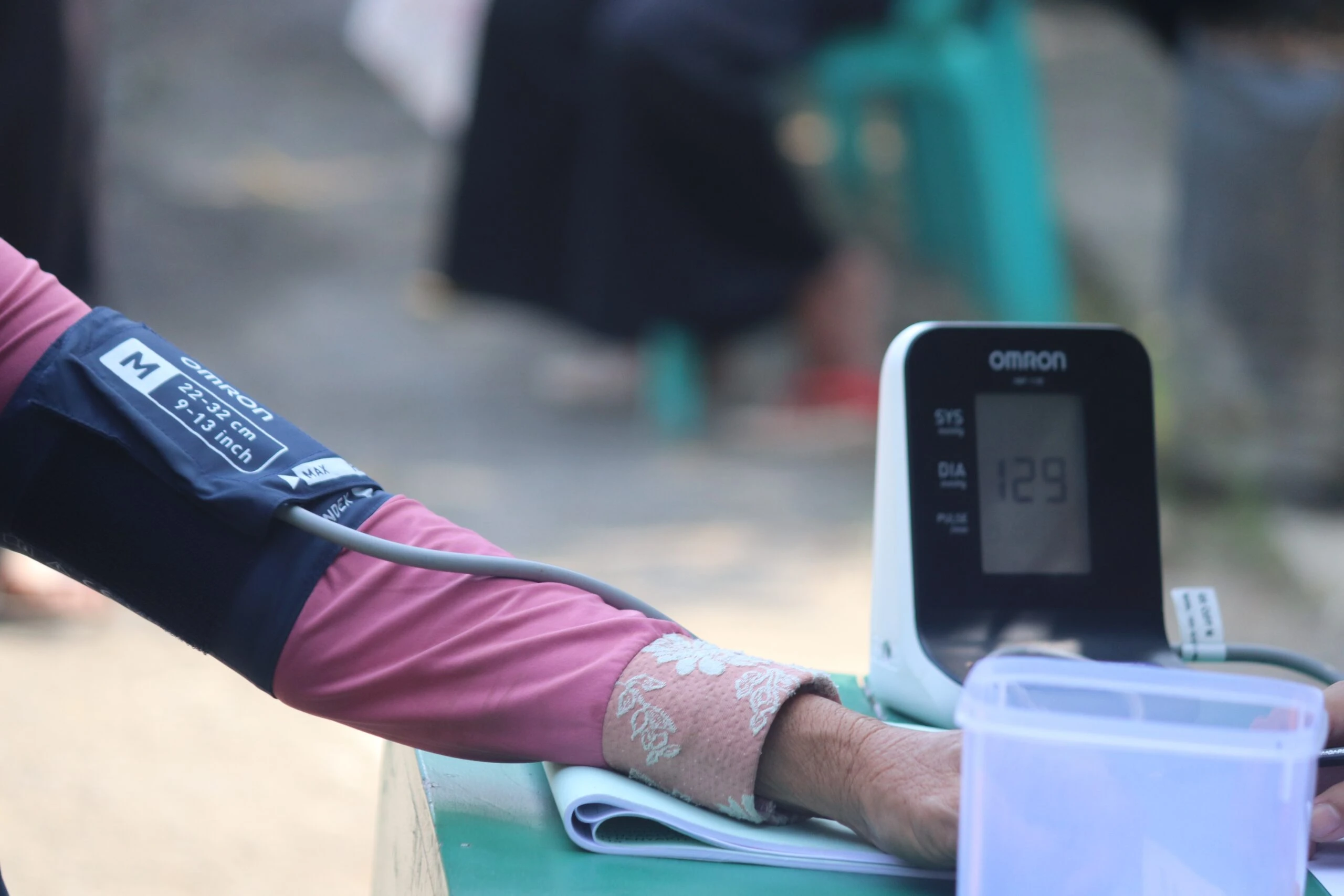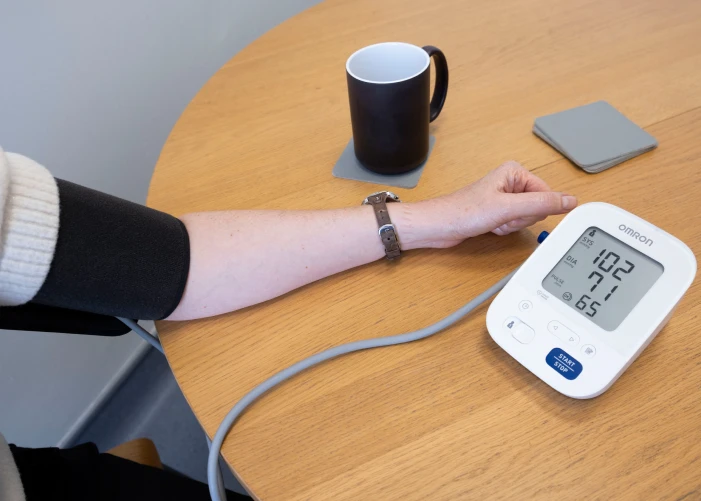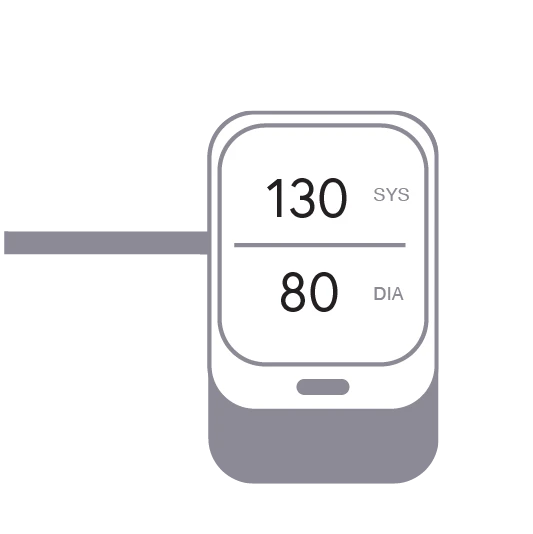Blood pressure
- Lauren McDunphy, Stroke Nurse Specialist
- 5 minute read
- Last updated: November 2024

Blood pressure is the force of blood against the walls of your arteries. If your blood pressure is high, then the pressure or force is greater than it should be.
This is also known as hypertension. Hypertension can lead to stroke, vision loss, heart attacks, heart failure, kidney disease and more.
Monitoring your blood pressure and keeping it at a healthy level can reduce your risk of a stroke.
What is blood pressure?
Blood pressure is the force of blood against the walls of your arteries.
If your blood pressure is high, then the pressure or force is greater than it should be.
Why should I monitor my blood pressure?
Monitoring your blood pressure and keeping it within a healthy target range can reduce your risk of a stroke.
If your blood pressure is high this means that the pressure or force is greater than what it should be. This is also known as hypertension.
Hypertension can lead to stroke, vision loss, heart attacks, heart failure, kidney disease and more.
How to check my blood pressure?
Watch the video or follow the steps below when checking your blood pressure.
Step 1.
Don’t eat, drink alcohol, exercise, smoke or take a bath for 30 minutes before checking your blood pressure.
Step 2.
Find a quiet place and a comfortable chair. Sit upright with your feet flat on the ground and your back straight.
Step 3.
Place the cuff just above your elbow, make sure to not place the cuff over heavy or thick clothes. Make sure it is not too tight.
Step 4.
Rest your arm on a table at heart level, with your palm facing upward.
Step 5.
Turn the machine on and press start. You will feel the cuff inflate.
Step 6.
The monitor will then display your blood pressure reading. You will see a top and a bottom number.
Step 7.
Write these numbers down in your stroke book or notebook. Ensure to write the date and the time.
Step 8.
Rest for 5 minutes and take a second blood pressure recording. Your first recording can often be slightly elevated so it is always good to recheck.
When should I check my blood pressure?
Following a stroke or TIA; it is recommended to check your blood pressure daily for the first month.
We recommend making an appointment with your GP within the first 2 weeks after your stroke or TIA for blood pressure review.
Following further review from your GP, you may then reduce your daily monitoring to once/twice a week if your blood pressure is within a safe range and it is medically advised by your GP.
It is recommended to check your blood pressure ideally at the same time each day.
Important
If you are on blood pressure lowering medication.
If you are on blood pressure lowering medication, we recommend checking your blood pressure 2-3 hours after taking your medication. Your GP or stroke doctor will want to see if your current blood pressure medications are working. You should take note of what time you took your medication and also what time you checked your blood pressure. This is very important information for your GP or stroke doctor to have when reviewing your blood pressure readings.
Where can I measure my blood pressure?

At home
You can buy a blood pressure monitor and monitor your blood pressure yourself in the comfort of your own home.
At the pharmacy
Your local pharmacist can monitor your blood pressure for you.
With your GP (family doctor)
Your GP can help you monitor your blood pressure regularly.
Where can I purchase a blood pressure monitor?
It is very important to ensure the blood pressure monitor that you purchase is medically approved.
Your local pharmacy will be able to provide you with advise on blood pressure monitors available to purchase from them.
What should my blood pressure be?
Normal blood pressure can vary from person to person. Based on your specific medical requirements, it is important to speak to your stroke doctor or your GP regarding your own specific blood pressure target range.
Knowing your specific blood pressure target range and staying within this range can help reduce your risk of a stroke.
Important
If your blood pressure drops below your range, or increases above your range.
It is very important to speak with your GP or stroke doctor regarding advise on actions that you should take if your blood pressure drops below your range, or increases above your range.
What do the upper and lower numbers mean?

The top number is your systolic (SYS) blood pressure.
This will be the higher number. This is the blood pressure in your arteries when your heart beats.
The bottom number is your diastolic (DIA) blood pressure.
This will be a lower number to the systolic. This is the blood pressure which shows the pressure in the arteries when you are at rest.